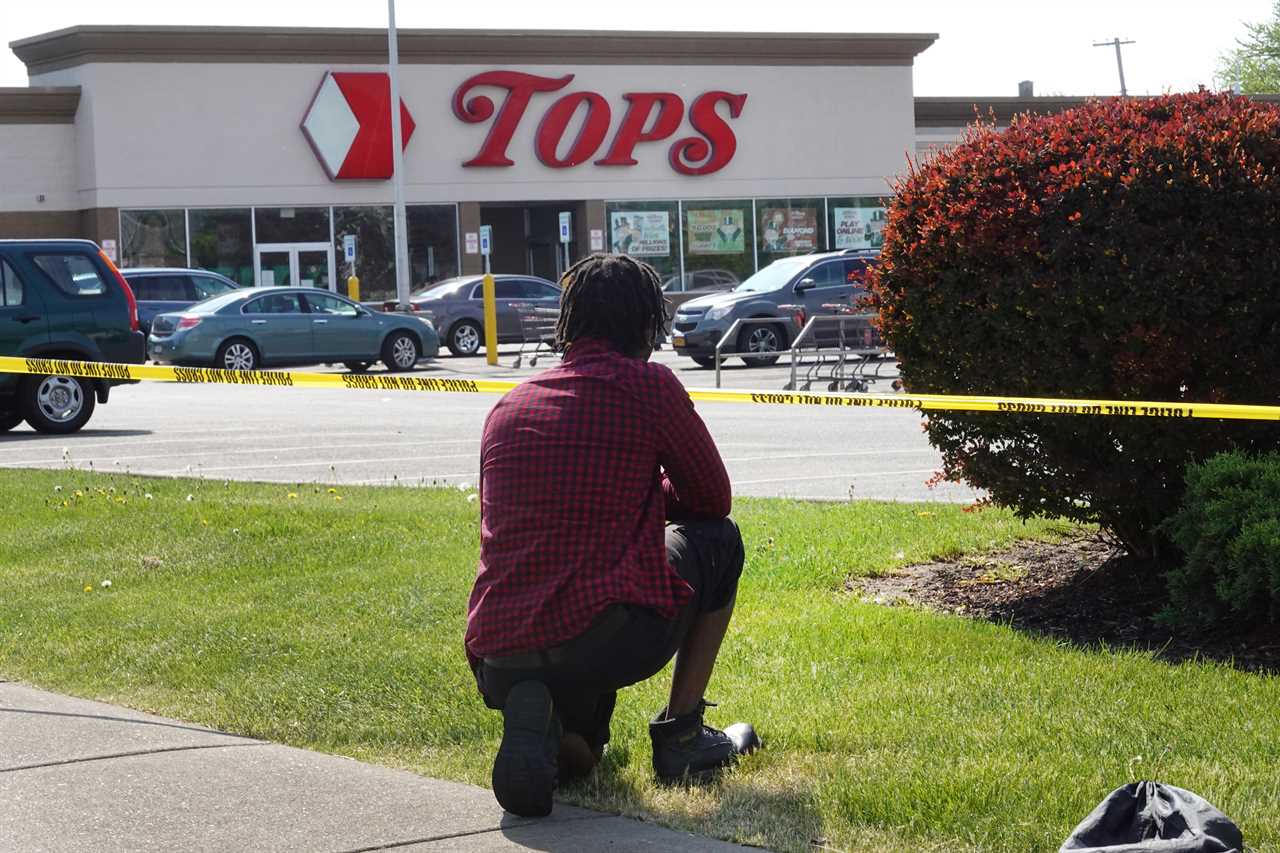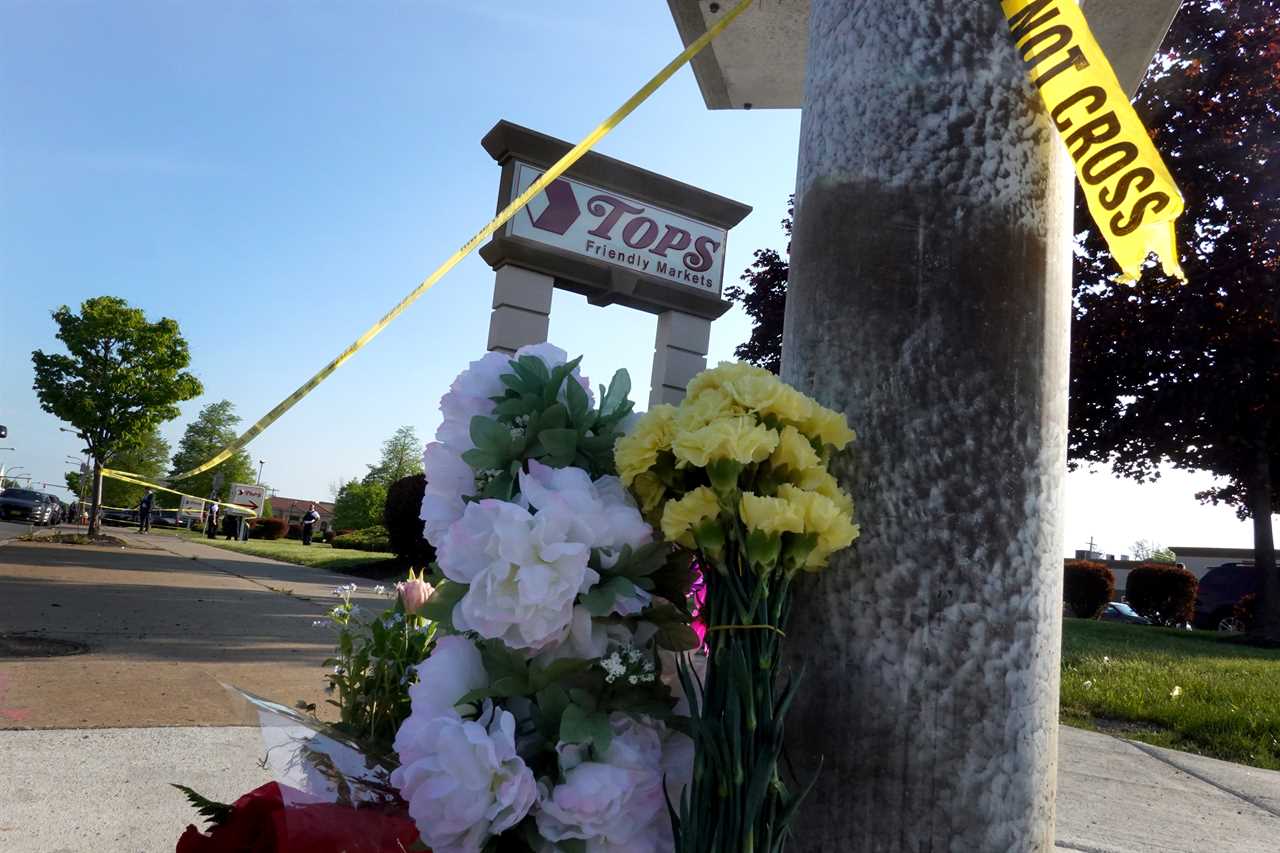
The victims of the gunman who opened fire in a Buffalo grocery store were shopping on what should have been an ordinary, sunny Saturday afternoon, enjoying the sweet rituals of preparing for Sunday dinner with family. Celestine Chaney was buying strawberries to complete the shortcake she savored. Andre Mackniel wanted to buy a birthday cake for his 3-year-old son. They were among the 10 Black Americans who died in that grocery store because they were so easy to target.
It was no accident that the gunman chose Buffalo’s East Side for his attack, since it is still dense with descendants of Great Migrants who fled the South beginning in the early 20th century to escape Jim Crow and find gainful employment. The 6 million odd Great Migrants who had moved north and west by 1970 were themselves descendants of enslaved people. For about a century, especially in northern and midwestern cities, many of those Black Americans have been intentionally concentrated in communities like East Buffalo.
The 18-year-old white male shooter was radicalized by the “great replacement” theory that nearly half of Republicans and a quarter of Democrats now believe to some extent — the conspiratorial idea that elites are trying to increase immigration to replace native-born white Americans. He self-identified as a white supremacist and apparently wrote a lengthy manifesto in a pattern followed by several mass killers. The manifesto parroted common anti-Semitic and racist ideas and internet memes. Among his written goals: murdering as many Black people as possible. Though most Black Americans are native-born U.S. citizens, he viewed them (alongside immigrants of color) as “replacers” of white Americans who needed to be killed or chased out of the United States so that whites would remain dominant.
But the fact that he had to travel more than 200 miles from his nearly all-white hometown to find a Black community concentrated enough to kill en masse proves that Blacks aren’t “replacing” whites; in fact, Black Americans in Buffalo are still struggling to escape deliberate disinvestment and segregation.
Buffalo is among the most segregated Black communities in America — a legacy of the peculiar, Black-subordinating institution once called the ghetto, until that noun became a pejorative. According to The New York Times, the terrorist shooter selected the Tops Friendly Market as the best spot for a killing spree after researching predominantly Black ZIP codes. The legacy of segregation eased his selection process. In a historically redlined community still suffering from disinvestment, this sole supermarket on the Black side of town had become a treasured community gathering space in what had previously been a food desert.
In his manifesto, the terrorist shooter implied that the mere presence of Black people were a threat to his future and that of other whites. And he fabulized that each Black "replacer" on average cost white taxpayers $700,000 in government largesse.
But the history of segregated Buffalo shows that instead of Blacks replacing whites and taking up too many resources, the truth is the opposite — that many descendants have been cordoned off from the rest of society and systematically denied access to resources and opportunities that whites enjoy.
According to a short history of Buffalo segregation issued in 2018 by the Partnership for Public Good, roughly 85 percent of Buffalo’s Black residents live east of Main Street, a major north-south artery that splits the city. White residents in the city overwhelmingly live west of Main Street. How did this stark segregation happen? Government and private actors constructed it with great, anti-Black intention.

In every American city where large numbers of Great Migrants landed, the primary response was to contain them in their own neighborhoods and then cut those neighborhoods off from the public and private investment that rained down on white neighborhoods. Buffalo was no exception. Black residents on the East Side were subjected to the same policy choices that caused cumulative economic and social trauma in Black neighborhoods throughout the country: restrictive covenants, redlining, segregated public housing, displacement by urban redevelopment and interstate highways, and endemic disinvestment.
African American southerners came to Buffalo in droves during World War I to work in steel factories charged with producing war materiel. Black migrants encountered resistance and occasional violence when they tried to move into white working-class neighborhoods. Realtors and private homeowners began to insert racially restrictive covenants in deeds, mandating that properties in white areas never be sold to non-whites.
Segregation into identifiable Black space is the enduring legacy of another white supremacist ideology, the idea that Black people were not worthy of living near or among white people, that they were a threat to whites' property values and to white racial purity. The federal government accelerated both the ideology and its physical manifestations when it insisted on rating neighborhoods in every urban area in the country in the 1930s. Virtually all Black neighborhoods, even relatively prosperous Hamlin Park in Buffalo, were marked with the lowest rating — D — and color coded in red, explicitly deemed “hazardous.” Immediately, Black people were cut out of one of the largest wealth-building federal subsidies — the federally-insured 30-year mortgage — and a system of residential caste was born.
Starved of credit to invest in their homes and their neighborhoods marked as unworthy, Blacks’ homes and Blackness itself were devalued. Redlined neighborhoods, even quite vital ones, began to decline and government made matters worse by underfunding basic services like roads, sewers and schools in Black areas.
In more highly valued white areas, people lived in a well-resourced land of opportunity where prospering was common. At the other extreme, many descendants of the Great Migrants were relegated to high-poverty Black environs, with systemic disadvantages that required superhuman effort to overcome, including separate and unequal schools and lack of public transportation to job centers.
After redlining, government piled on, creating even more extreme segregation. The Buffalo housing authority intentionally built all-Black public housing on the East Side, concentrating poverty and Blackness and further entrenching white avoidance of Blacks as potential neighbors. Blockbusting realtors encouraged white panic-selling and profited by charging Black buyers more than whites paid for housing.
White people who wished to flee encroaching Blackness could take advantage of federal subsidies like the G.I. Bill and move to all-white suburbs; many white residents of Buffalo fled to new bastions of whiteness in Erie County made possible through exclusionary zoning. Zoning codes that allowed only single-family, large-lot homes and no apartments, not even market-rate rental housing and certainly no subsidized housing, coupled with discrimination against Black homebuyers perfected a city-suburban divide in the Buffalo-Niagara metropolitan region in which opportunity and space was racialized. Even now, according to the Partnership for Public Good report, only 10 percent of Black residents live in above-average opportunity areas in the region compared to over 60 percent of white residents.
Within the city of Buffalo, “Negro Removal” and highway construction added to the architecture of segregation. For example, about 1,600 Black families were displaced by a large-scale “urban renewal” project known as the Ellicott Redevelopment Project and relocated to majority Black neighborhoods. Across the country many descendants who were dislocated from strategic downtown neighborhoods under the urban renewal banner were moved into segregated public housing. In Buffalo, when the Kensington Expressway was built, it tore through Black neighborhoods on the East Side, displacing descendants and destroying Black-owned homes and businesses to create easy access to the city for suburban commuters and a physical barrier that reinforced separation from the West Side.
The legacy of segregation and opportunity hoarding, of overinvesting and excluding in affluent white space and disinvesting in and redlining Black neighborhoods, continues to this day. In recent decades, the East Side was redlined by banks and lenders, denying traditional mortgages. But descendants there, like segregated descendants everywhere, were targeted for usurious predatory loans that robbed Black homeowners of the housing equity and wealth they did have, exploding the Black-white homeownership and wealth gaps. Modern descendants on the East Side have also endured high-poverty schools, disrespectful and excessive policing, health disparities, exposure to industrial pollutants and lack of access to healthy food.
For decades, East Buffalo didn’t even have its own supermarket, but after a long campaign, East Side descendants succeeded in getting the Tops Friendly Market.
The fact that a young white terrorist chose the East Side of Buffalo and this Tops grocery store to take out his anger about a fake “great replacement” theory demonstrates the opposite of what he believed. In Buffalo and in most American cities, with the help and encouragement of the federal government, it’s been Black people who’ve been displaced, cordoned off and forced to endure underinvestment and segregation.
Which, tragically, is why so many were in the same supermarket, at the same time, innocently shopping for food for themselves and their families when he went looking for Black people to kill.
----------------------------------------
By: Sheryll Cashin
Title: Opinion | How the Buffalo Massacre Proves There’s No 'Great Replacement'
Sourced From: www.politico.com/news/magazine/2022/05/21/buffalo-massacre-great-replacement-segregation-00034177
Published Date: Sat, 21 May 2022 06:00:00 EST
Did you miss our previous article...
https://consumernewsnetwork.com/politics-us/cherie-westrichs-gen-x-journey-from-alt-rock-bands-to-maga-politician






